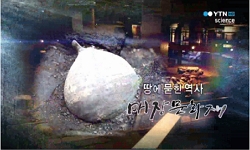We preserve the cultural heritage should be handed down. Because the current generation of cultural heritage to be inherited by future generations in the public interest or has outstanding universal value that transcends generations. cultural heri...
http://chineseinput.net/에서 pinyin(병음)방식으로 중국어를 변환할 수 있습니다.
변환된 중국어를 복사하여 사용하시면 됩니다.
- 中文 을 입력하시려면 zhongwen을 입력하시고 space를누르시면됩니다.
- 北京 을 입력하시려면 beijing을 입력하시고 space를 누르시면 됩니다.
文化財 指定 關聯 法制의 整備方案 硏究 = A Study on the Cultural Heritage Protection Act maintenance with respect to the designation
한글로보기https://www.riss.kr/link?id=T13316336
- 저자
-
발행사항
대전 : 忠南大學校 大學院, 2013
-
학위논문사항
학위논문(석사)-- 忠南大學校 大學院 : 법학과 공법 2013. 8
-
발행연도
2013
-
작성언어
한국어
- 주제어
-
발행국(도시)
대전
-
형태사항
v, 137 p. ; 26 cm
-
일반주기명
지도교수: 최인호
- 소장기관
-
0
상세조회 -
0
다운로드
부가정보
다국어 초록 (Multilingual Abstract)
We preserve the cultural heritage should be handed down. Because the current generation of cultural heritage to be inherited by future generations in the public interest or has outstanding universal value that transcends generations.
cultural heritage has a variety of properties and characteristics. National or ethnic origin, in the country's academic and artistic value with intangible value that is also to cover.
In that sense, the tradition of cultural heritage for future generations, especially for countries with such strong support and regulate the legal foundation for a formal request.
"Cultural heritage Protection Act" defines the term cultural heritage means naturally or artificially formed national, racial, or world heritage of outstanding historic, artistic, or academic value.
however, our "Cultural heritage Protection Act" has several problems.
Narrow concept of cultural assets and cultural heritage does not encompass the entire designated criteria and designates the procedure.
especially now that we face and the space represented by the concept of traditional cultural heritage and intangible cultural heritage in the tangible cultural fusion of the concept of cultural heritage, such as the transition as a new paradigm is required.
diversification of cultural heritage conservation target domestic and international acceptance of the Convention, and international compliance regulations, foreign and multilateral cultural property protection are rapidly changing the face of environmental change.
but nonetheless a piecemeal approach to cultural heritage is still perched in the center of the "Cultural Heritage Protection Act".
cultural heritage conservation and management because this paradigm shift in how we cater to the "Cultural Properties Protection Act" and issues that do derive improvements that can be a major challenge.
In that sense, this study related to the basic law of our cultural heritage "Cultural Heritage Protection Act" and the enforcement decree and other relevant legal issues presented by analyzing and maintenance plans generally derive and domestic legal tender for such a paradigm shift focused.
In particular, the framework of analysis, this study compares Japanese "Cultural Properties Protection Law" and the U.S. "National Historic Preservation Act of 1966" and the "UNESCO World Heritage Convention" was compared with the actual legislations.
maintenance through a comparative analysis of these proposed measures are as follows.
first, the concept and type of cultural property in relation to the maintenance of the cultural heritage as a new paradigm is proposed to expand the concept.
now the concept of cultural heritage and cultural landscapes, including the expansion of the introduction of a new type of proposed.
Second, the cultural heritage was clarified by specifying maintenance standards. In addition, the value of cultural heritage protection zone was established criteria.
third, the cultural heritage maintenance application documents specify the procedure to amend the proposed plan.
fourth, the cultural heritage of the committee system was actually looking for ways to improve.
fifth, for the efficient management of cultural heritage tentative list of proposed introduction of.
finally, to ensure the property rights of the people as a way to cultural heritage protection zone, such as the revision of the system is presented.
국문 초록 (Abstract)
문화재의 정의는 국가마다 다르며 문화재 보호 관련 제도도 각국의 역사적 배경과 법 규정 체계에 따라 다양하다고 할 수 있다. 그럼에도 거의 모든 국가가 문화재에 대해 지정‧등록‧...
문화재의 정의는 국가마다 다르며 문화재 보호 관련 제도도 각국의 역사적 배경과 법 규정 체계에 따라 다양하다고 할 수 있다.
그럼에도 거의 모든 국가가 문화재에 대해 지정‧등록‧대장기재 등의 방법을 통해 문화재를 보존‧전승하려 하는 것은 문화재는 현재 세대에서 미래세대로 계승해야 하는 공공이익 또는 세대를 초월한 탁월한 보편적 가치를 갖고 있기 때문이다.
이러한 문화재는 다양한 속성과 특징을 갖고 있다. 유형의 동산‧부동산으로역사적‧학술적‧예술적 가치를 지닌 것도 있고 무형의 전통적 가치를 포괄하는 것도 있다.
이처럼 문화재는 다양한 특질과 속성을 보유하고 있지만 현재 세대의 우리에게 주어진 명확한 임무는 문화재에 관한 현재세대의 가치에 경도되지 않고 문화재의 범위와 내용을 확대하여 미래세대로의 전승을 위한 보존 토대를 구축하는 작업일 것이다.
이와 관련 우리의 「문화재보호법」은 "인위적‧자연적으로 형성된 국가적‧민족적‧세계적 유산으로서 역사적‧예술적‧학술적‧경관적 가치"를 지닌 것으로 문화재를 개념정의하고 문화재의 성격에 따라 "유형문화재‧무형문화재‧기념물‧민속문화재"로 분류하고 있으며 동법 시행령 등을 통해 문화재의 세부 지정기준과 지정절차 및 지정효과를 규정하고 있다.
그러나 현행 「문화재보호법」은 문화재 개념이 협소하여 문화재 전체를 아우르지 못하고 있으며 문화재 지정기준과 지정절차에 있어서도 여러 문제점을 갖고 있다고 할 수 있다.
특히 지금 우리는 개체와 면으로 대표되는 기존 문화재 개념에서 유형문화재와 무형문화재의 융합‧문화경관 등 새롭게 대두되는 문화재 보존대상의 다양화‧문화재 관련 국제협약의 국내적 수용과 국제규율 준수‧외국과의 다자간 협상 등을 통한 문화재 보호 등 급변하는 환경변화에 직면하고 있으며 이에 따른 새로운 패러다임으로서의 문화재 개념 정립을 요구하고 있다.
때문에 문화재의 보존‧관리‧활용에 있어 이러한 패러다임의 변화를 어떻게 우리 「문화재보호법」에 수용하고 개선방안을 도출하는가 하는 문제는 중요한 과제라고 할 수 있다.
그런점을 전제로 본 연구는 우리 문화재 관련 기본법인 「문화재보호법」과 동법 시행령 등 관련 법제를 분석하여 일반적 문제점을 제시하면서 그 정비방안을 도출하고 이러한 패러다임의 변화를 국내법화 하여 문화재 보존‧관리‧활용의 새로운 준거틀을 제시하였다.
특히 본 연구는 이를 위해 법학적 관점에서 일본의 "문화재 보호법"및 미국의 "1966 국립 역사 보존 법"과 "유네스코 세계 유산 협약" 등의 실제 법령을 비교 하였으며 이러한 비교 분석을 통해 제시된 정비방안은 다음과 같다.
먼저 새로운 패러다임으로서의 문화재의 개념정비와 관련하여 문화재의 개념과 유형을 확장할 것을 제시하였다. 지금의 문화재 개념에서 문화유산 개념으로 확장 및 문화경관 등 새로운 문화재 유형의 도입 그리고 유형문화재와 무형문화재의 통합 기준 설정이이 그것이다.
둘째, 문화재의 지정기준과 문화재 보호구역의 지정기준을 명확히 하는 방안을 제시하였다.
셋째, 문화재 지정 신청 서류 서식의 개정방안을 제시하였다.
넷째, 문화재 위원회의 효율화를 위한 위원회의 구성 및 운영의 개정방안을 제시하였다.
다섯째 효율적인 문화재 관리를 위한 잠정목록 제도의 도입 방안을 제시하였다.
마지막으로, 문화재 보호구역의 설정 등으로 인해 발생하는 재산권의 제한에 따른 실질적 보상방안을 제시하였다.
목차 (Table of Contents)
- 제1장 서론 1
- 제1절 연구의 배경 및 목적 1
- 제2절 연구의 범위 및 방법 3
- 제2장 문화재 지정 관련 법제의 현황 7
- 제1절 문화재의 개념 및 유형 7
- 제1장 서론 1
- 제1절 연구의 배경 및 목적 1
- 제2절 연구의 범위 및 방법 3
- 제2장 문화재 지정 관련 법제의 현황 7
- 제1절 문화재의 개념 및 유형 7
- Ⅰ. 문화재 개념 7
- Ⅱ. 유사 개념(문화유산) 12
- Ⅲ. 문화재 유형 14
- 제2절 문화재의 법적 성격 15
- Ⅰ. 법적 성격 15
- Ⅱ. 관련 판례 20
- 제3절 문화재의 지정(등록) 기준 24
- Ⅰ. 국가문화재 지정 기준 24
- Ⅱ. 시도문화재 지정 기준 26
- Ⅲ. 문화재자료 지정 기준 27
- Ⅳ. 보호물 및 보호구역 지정 기준 28
- Ⅴ. 등록문화재 등록 기준 29
- 제4절 문화재의 지정(등록) 절차 30
- Ⅰ. 국가문화재 및 등록문화재 지정(등록) 절차 30
- 1. 직권 지정 및 등록 30
- 2. 신청으로 인한 지정 및 등록 31
- Ⅱ. 시도문화재 지정 및 가지정 절차 32
- 제5절 문화재의 지정(등록) 효과 33
- Ⅰ. 국가지방자치단체의 책무 33
- Ⅱ. 소유자관리자 등의 의무부담 34
- 제3장 문화재 지정 관련 법제의 문제점 36
- 제1절 문화재 개념 및 유형의 문제점 36
- Ⅰ. 문화재 개념의 협소 및 추상성 36
- Ⅱ. 기존 문화재 유형 분류의 한계 37
- 제2절 문화재 지정 기준의 문제점 37
- Ⅰ. 문화재 유형별 설정 기준의 불명확 및 지정 기준의 불일치 38
- Ⅱ. 문화재 보호구역 지정 기준의 미비 39
- Ⅲ. 유무형문화재의 통합 보존을 위한 지정 기준의 부재 40
- 제3절 문화재 지정 절차 등의 문제점 41
- Ⅰ. 문화재 신청 서식의 개정 41
- Ⅱ. 문화재위원회 구성 및 운영의 비탄력성 42
- Ⅲ. 문화재 지정 시점과 보호관리 시점의 간극 발생 43
- Ⅳ. 재산권 제한에 따른 보상대책의 미흡 44
- 제4장 일본미국유네스코 세계유산의 입법례 검토 45
- 제1절 일본 45
- Ⅰ. 문화재의 개념 및 유형 45
- Ⅱ. 문화재의 지정(등록선정선택) 기준 48
- 1. 문화재의 지정 기준 48
- 2. 문화재의 등록 기준 51
- 3. 문화재의 선정 기준 52
- 4. 문화재의 선택 기준 53
- Ⅲ. 문화재의 지정(등록선정) 절차 54
- Ⅳ. 문화재 지정(등록선정) 효과 55
- Ⅴ. 시사점 56
- 제2절 미국 58
- Ⅰ. 문화재의 개념 및 유형 58
- Ⅱ. 국가등록부(NRHP) 등록 및 국가역사명소(NHL) 지정 기준 61
- Ⅲ. 국가등록부(NRHP) 등록 및 국가역사명소(NHL) 지정 절차 66
- Ⅳ. 국가등록부(NRHP) 등록 및 국가역사명소(NHL) 지정 효과 69
- Ⅴ. 시사점 71
- 제3절 유네스코 세계유산 73
- Ⅰ. 세계유산의 개념 및 유형 73
- Ⅱ. 세계유산의 등재 기준 75
- 1. 탁월한 보편적 가치(Outstanding Universal Value) 75
- 2. 보호 및 관리(Protection and Management) 77
- Ⅲ. 세계유산의 등재 절차 83
- Ⅴ. 시사점 84
- 제5장 문화재 지정 관련 법제의 정비방안 87
- 제1절 문화재 개념 및 유형의 정비 87
- Ⅰ. 새로운 패러다임으로서의 문화재 개념 확장 및 구체화 87
- Ⅱ. 문화재 개념요소의 정비 90
- Ⅲ. 문화경관 등 새로운 유형의 도입 93
- Ⅳ. 2단계 지정 확대 및 시도문화재의 세부 유형화 95
- 제2절 문화재 지정 기준의 정비 98
- Ⅰ. 문화재 유형별 핵심징표의 반영 및 지정 기준의 일치 98
- Ⅱ. 문화재 보호구역 지정 기준의 명확화 101
- Ⅲ. 유무형문화재의 통합 보존을 위한 지정기준의 설정 104
- 제3절 문화재 지정 절차 등의 정비 107
- Ⅰ. 문화재 신청서식 세부 지표의 정비 107
- Ⅱ. 문화재위원회 구성 및 운영의 개정 110
- Ⅲ. 잠정목록 제도의 도입 115
- Ⅳ. 재산권 제한에 따른 보상의 실질화 117
- 제6장 결론 122
- 참고문헌 131
- Abstract 135












